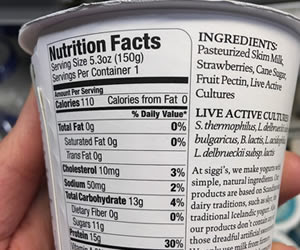Deciphering the Nutrition Facts Label: A Guide to Making Healthier Food Choices
In our quest for healthier eating habits, understanding the information presented on the Nutrition Facts Label is paramount. Often found on the packaging of food items, this label serves as a roadmap, offering valuable insights into the nutritional content of what we consume. While it may appear daunting at first glance, decoding this label empowers individuals to make informed decisions that align with their health goals.
At its core, the Nutrition Facts Label provides a breakdown of key nutrients present in a serving size of the product. This includes information on calories, macronutrients such as carbohydrates, fats, and proteins, as well as micronutrients like vitamins and minerals. By familiarizing ourselves with these details, we gain a deeper understanding of the nutritional value of the foods we eat. Visit https://enutritionfacts.com/
Calories serve as a fundamental aspect of the label, representing the amount of energy provided by a serving of the food. While calorie count alone does not dictate a food's healthfulness, it is essential to be mindful of portion sizes to maintain a balanced diet. Equally important is the distribution of macronutrients within those calories. Carbohydrates, fats, and proteins each play unique roles in our bodies, and striking a harmonious balance among them is key to overall well-being.
Carbohydrates, often classified as either simple or complex, are a primary energy source for the body. Simple carbohydrates, found in sugars, are quickly digested and can lead to rapid spikes in blood sugar levels if consumed excessively. Conversely, complex carbohydrates, present in foods like whole grains, legumes, and vegetables, provide sustained energy and essential nutrients such as fiber.
Fats, while often vilified, are crucial for various bodily functions, including hormone production and nutrient absorption. However, not all fats are created equal. Unsaturated fats, found in foods like nuts, seeds, and avocados, are considered heart-healthy and should be prioritized over saturated and trans fats, which can contribute to adverse health outcomes when consumed in excess.
Proteins are the building blocks of life, essential for the growth and repair of tissues within the body. Animal sources such as meat, poultry, and dairy typically provide complete proteins containing all essential amino acids, while plant-based sources like beans, lentils, and tofu offer a diverse array of nutrients alongside protein.
Beyond macronutrients, the Nutrition Facts Label also sheds light on micronutrient content, including vitamins and minerals essential for optimal health. From vitamin A to zinc, these micronutrients play vital roles in various physiological processes, from supporting immune function to promoting bone health. Monitoring the presence of these nutrients can help ensure that our dietary intake meets our body's needs.
While the Nutrition Facts Label provides valuable information, it's essential to approach food choices with a discerning eye. Consider factors beyond the label, such as ingredient lists and food processing methods, to make truly informed decisions. Opting for whole, minimally processed foods whenever possible ensures a more nutrient-dense diet rich in essential vitamins, minerals, and antioxidants.
Moreover, mindful eating practices, such as paying attention to hunger and fullness cues, can further enhance our relationship with food and promote overall well-being. By cultivating a balanced approach to nutrition that prioritizes both physical and emotional health, we can harness the power of food to nourish our bodies and enrich our lives.
In conclusion, deciphering the Nutrition Facts Label empowers individuals to make healthier food choices that align with their nutritional goals. By understanding the information presented on the label and considering additional factors such as ingredient lists and processing methods, we can cultivate a balanced diet that supports optimal health and well-being. With knowledge as our guide, we embark on a journey toward a more vibrant and fulfilling life through the nourishing power of food.


Comments
Post a Comment